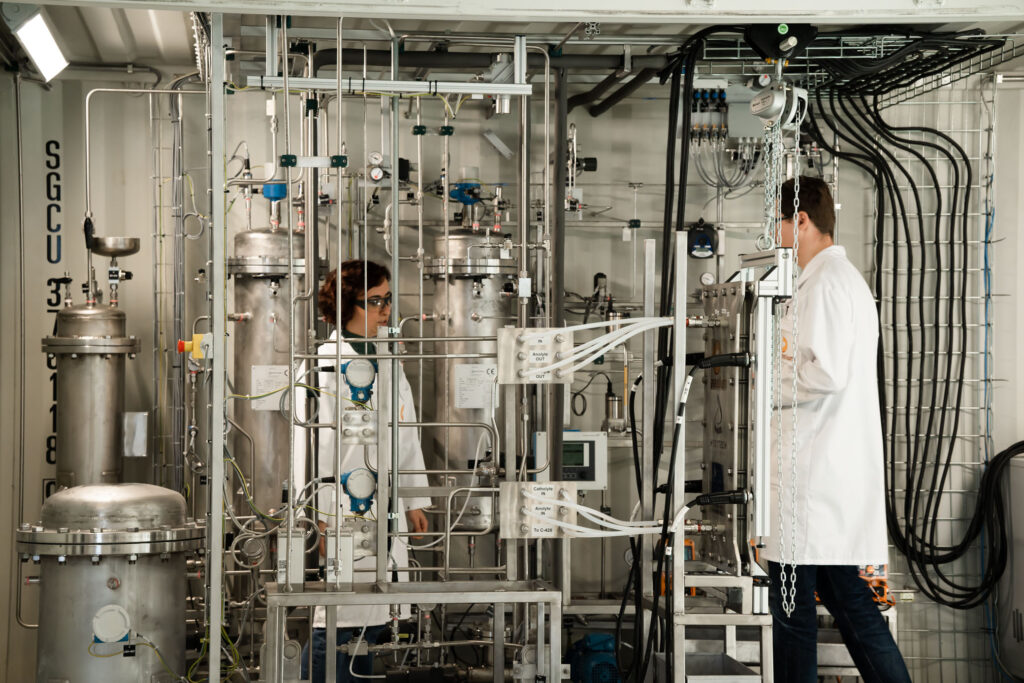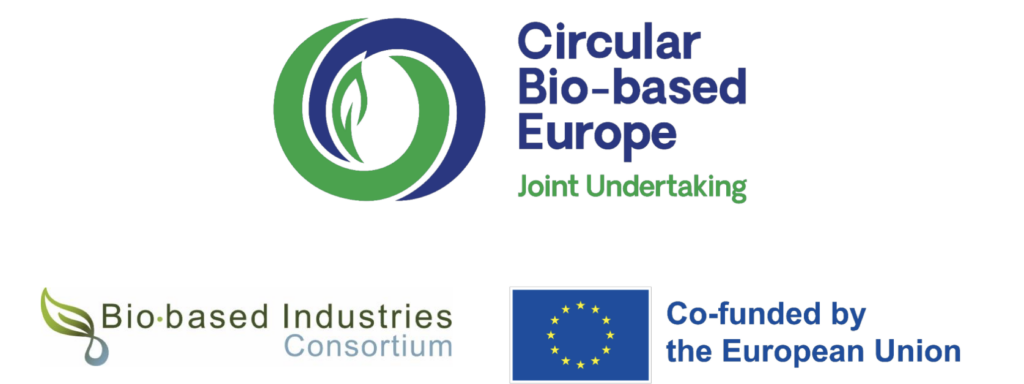Scaling CO₂ Conversion: Advancing the HICCUPS-Process from Lab to Industry
Interview with Mariana Araújo from the EU and CBE JU funded HICCUPS project

The HICCUPS project aims to efficiently convert biogenic CO₂ from wastewater treatment plants into bio-based polymers for packaging. Using an electrochemical process, CO₂ from sludge is transformed into monomers and polymerised into polylactic-co-glycolic acid (PLGA). This biodegradable polymer, with excellent barrier properties, offers a renewable alternative to fossil-based polyethylene. To showcase its potential, PLGA-based packaging materials, including coated paper for food packaging and moulded plastic, will be developed.

Mariana Araújo is the technical leader of Work Package 2, which covers the development and upscaling of CO2-to-monomer conversion process.
She works at Avantium, as a Senior Scientist in the Volta Team, and she has been involved in several EU projects dedicated to the development of CCU technologies, like RECODE and CatCO2nvers.
Avantium’s Volta Technology harnesses the power of CO₂ through electrochemistry. Avantium’s electrocatalytic platform transforms this gas into a new carbon source for the chemical industry, enabling cleaner processes and reducing industrial emissions.
What is the HICCUPS-process, and why is it considered a breakthrough in sustainable chemistry?
Avantium’s Volta innovative process converts CO₂ into oxalic acid, and then into glycolic acid. Glycolic acid, combined with biobased lactic acid, can be used to produce PLGA polyester in existing manufacturing assets. PLGA is a biodegradable polyester with excellent barrier and mechanical properties, making it an excellent sustainable alternative for conventional fossil-based polymers.
The majority of oxalic acid is currently produced from fossil naphtha via propylene and ethylene glycol or CO, which is mainly obtained from partial oxidation of hydrocarbon gases from natural gas or gasification of coal. From the dominant methods for industrial production of oxalic acid, three are based on a nitric acid oxidation of different substrates, such as propylene, ethylene glycol and carbohydrates, which lead to the production of NO and other nitrogen oxides as side products. The other process is based on a 2-step process in which CO and a lower alcohol are reacted under pressure to form the corresponding diester of oxalic acid. This process is however costly due to the high capital investment and utility costs (operating pressures of 10 -11 MPa).
In HICCUPS, our focus is on the upscaling of the CO2 conversion to oxalic acid route via formate. This is a 2-step process that includes 1) the electrochemical conversion of CO2 to formate, 2) the thermocatalytic conversion of formate into oxalate, followed by electrochemical acidification to oxalic acid. Oxalic acid can then be directly hydrogenated to glycolic acid by making use of a very selective catalyst developed by Avantium’s Volta team, at relatively mild temperatures. In summary, our process uses less severe conditions and produces less chemical waste than the alternative fossil routes.
What is the biggest challenge you have faced in scaling up this technology from lab experiments to industrial-scale production?
In the initial phase of the project, our main goal was to develop each individual conversion step within the entire process chain. Now, in the second phase, our focus has shifted to integrating these steps and scaling up the process. It is essential to test how well these individual steps integrate with each other and with the CO2 capture process. This will allow us to identify any impurities present in the intermediate streams, understand their impact on subsequent steps, and determine the most efficient methods for purifying these intermediate compounds if necessary.
Why is glycolic acid important, and how does it contribute to producing sustainable materials like PLGA?
Glycolic Acid (GA) is a very interesting product option for CCU, as its polymer, polyglycolic acid (PGA), exhibits excellent barrier properties – especially for oxygen, but also for water vapour. In addition to the favourable barrier properties, PGA also exhibits promising biodegradability and recyclability behaviour. Unfortunately, its mechanical properties make it very difficult to process. To overcome this, GA can be combined with Lactic Acid (LA) to form PolyLactic-co-GA (PLGA). With a GA content of over 80 % in the polymer (PLGA), the barrier properties are still very good. These strong barrier properties and good processability make PLGA a very promising material especially for packaging, as it has barrier for both water and oxygen, potentially reducing the number of layers or layer thickness required.
Various grades of PLGA are currently produced industrially, but only at small scale for medical applications due to the high production costs. Avantium has developed an alternative polymer synthesis route that can potentially lower significantly the production costs and make PLGA widely accessible to other application markets, such as packaging for food products or films for agricultural applications.
What role does collaboration play in making the HICCUPS-process a success — from engineering to supply chain?
Collaboration is pivotal in the success of the HICCUPS process, spanning from engineering to the supply chain. Starting from the CO2 supply, the partners involved in the development of the CO2 capture technology – Aqualung, Acciona, Sintef and Funditec – are working together to design and implement a system for capturing and purifying CO₂ and this will be crucial to ensure a high-purity input for the conversion steps. Prior to the polymerization step, VTT plays a vital role by developing a concept for the downstream processing of the glycolic acid stream and ensuring high purity glycolic acid is obtained. Finally, the partners involved in Work Packages 3 and 4 – Unife, Inrae, Walki and Tecnopackaging – will be collaborating on the polymer characterization, on the validation of the processability of PLGA-coated paper and on the production of food packaging prototypes.
Each partner's expertise and coordinated efforts are essential for overcoming technical challenges and ensuring the quality of the end products.
Looking ahead, what impact do you hope the HICCUPS-process will have on industry and the environment?
Most CCU and Bio-CCU concepts are still in the development phase. Many of the C1 and C2 products that could potentially be derived from CO2 are really bulk products including CO, methanol or formaldehyde. To economically replace these fossil-based molecules with CO2 derived equivalents is from a cost and technical point of view in the short term very challenging. In the HICCUPS project, a value chain has been identified which combines efficient carbon capture and utilization via the production of glycolic acid, which can be used as a monomer for the production of PLGA, a biobased polymer high growth potential that can tolerate higher market-entry prices.

Funded by the European Union. Views and opinions expressed are however those of the author(s) only and do not reflect those of the European Union. Neither the European Union nor the granting authority can be held responsible for them. The project is supported by the Circular Bio-based Europe Joint Undertaking and its members.
The project is supported by the Circular Bio-based Europe Joint Undertaking and its members.
Source: HICCUPS, original text, 2025-07-28.
